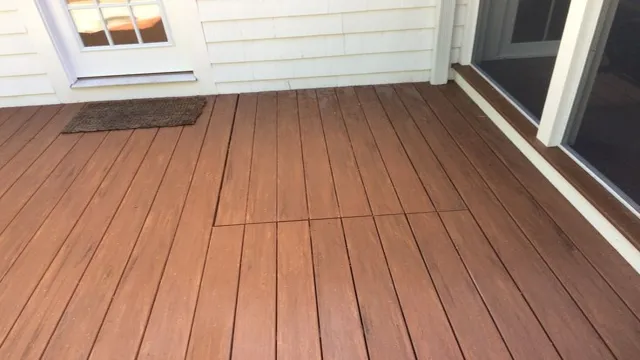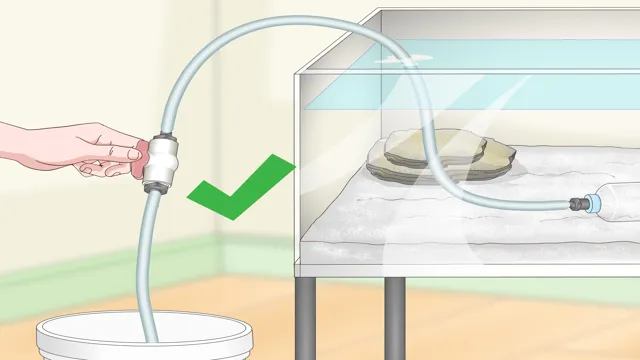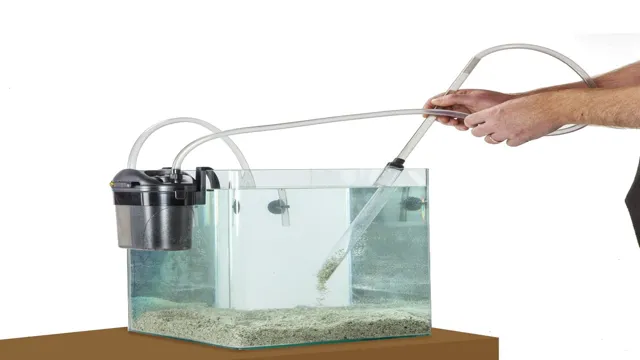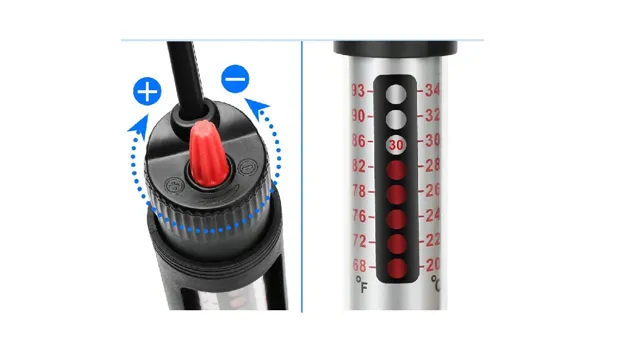Have you ever marveled at aquariums that seem to stretch on forever, their inhabitants silently gliding by as if suspended in air? Well, you can recreate that magic in your own home with a bulkhead aquarium. This stunning tank design not only provides a visually captivating focal point for your room but also offers practicality and functionality that surpasses traditional aquariums. A bulkhead aquarium is essentially a tank that extends not only up but also out, creating a unique viewing experience that feels almost like a window into another world.
It’s not just a stunning piece of decor – it’s also easier to maintain than traditional aquariums and provides more space for your aquatic friends to swim around in. To make a bulkhead aquarium, there are a few key steps to follow. First, you’ll need to decide on the size and shape of your tank.
This will depend on the dimensions of the room it will be placed in and the types of fish or other aquatic life you plan on keeping. It’s important to choose a size that will allow your creatures to thrive and be comfortable, rather than just squeezing them into a space that’s too small. Next, you’ll need to choose your materials carefully.
You’ll want a strong, durable tank that can withstand the weight of the water, as well as powerful filtration and lighting systems to keep your aquarium healthy and thriving. You may also need to factor in ventilation and acoustics if you plan on using a pump to move water through the tank. Once you have your materials in hand, you’ll need to carefully assemble them to create your bulkhead aquarium.
This process can be complex and time-consuming, but it’s crucial to take your time and ensure that each component is securely in place. You may also need to do some custom wiring or plumbing work depending on the specifics of your design. Overall, creating a bulkhead aquarium is a rewarding and fascinating project that can offer endless hours of enjoyment and wonder.
Whether you’re a seasoned aquarium enthusiast or just looking to add a striking element to your home decor, this unique tank design is definitely worth exploring.
Materials and Tools Needed
To make a bulkhead aquarium, you will need a few specific materials and tools. The first thing you will need is a large tank made of durable glass or acrylic, which will serve as the main structure. You’ll also need a bulkhead fitting, which is a specialized plumbing component that provides a tight seal where the water enters and exits the tank.
Other necessary tools include a drill, a hole saw or coring bit, a silicone sealant, and a wrench. Additionally, it is important to have a level and sturdy surface to set the aquarium on once it is assembled. With these materials and tools, you’re on your way to creating a beautiful and functional bulkhead aquarium.
Glass Tank
When it comes to creating a glass tank, there are a few materials and tools that you’ll need to ensure a successful build. Firstly, you’ll need glass panels that are the appropriate size for your tank. These can be purchased at a hardware store or glass supplier.
You’ll also need silicone sealant, which is used to seal the edges of the glass panels together. A caulking gun is useful for applying the sealant. In addition, you’ll need a glass cutter, which is used to trim the glass panels to the desired size.
It’s important to wear gloves and safety goggles when using a glass cutter, as this tool can be dangerous if not used properly. Finally, you may want to invest in a level and measuring tape to ensure that your tank is straight and level. By gathering all of these materials and tools, you’ll be well on your way to creating a beautiful and functional glass tank for your aquatic pets or plants.
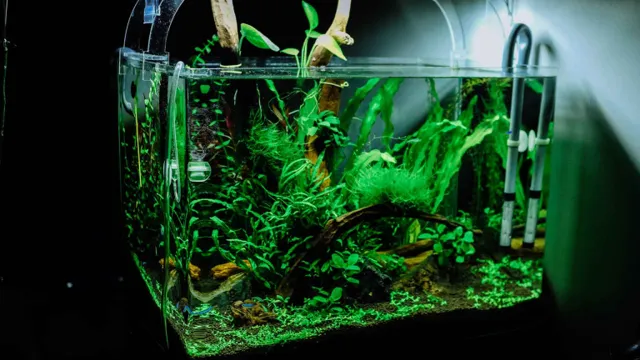
Bulkhead Fittings
When it comes to installing bulkhead fittings, there are a few important tools and materials that you’ll need to have on hand in order to get the job done right. First and foremost, you’ll need the bulkhead fittings themselves. These come in a variety of sizes and materials, so it’s important to choose the right ones for your specific application.
You’ll also need a drill bit that’s the same size as the fitting, as well as a wrench to tighten the nut on the inside of the tank. It’s important to choose high-quality materials for your fittings, as they will be exposed to potentially harsh conditions and need to be able to withstand them. Additionally, you may want to consider using some sealant or thread tape to ensure a tight seal and prevent leaks.
With these materials and tools in hand, you’ll be well on your way to successfully installing bulkhead fittings wherever you need them. (See Also: How to Make DIY CO2 for Aquarium: Boost Your Plant Growth Naturally!)
Sealant
Sealant If you’re planning to apply sealant, then you’ll need to make sure you have the right materials and tools on hand. The materials you’ll need will depend on the type of sealant you’re using, but common options include silicone, latex, and polyurethane. You’ll also need a caulking gun, a scraper or putty knife, and a clean cloth or sponge for cleaning up excess sealant.
While you might be tempted to skip out on some of these materials or tools, it’s important to have everything you need on hand to ensure that your sealant application is successful. Having the right materials and tools is just one part of the sealant application process. It’s also important to understand how to properly apply the sealant to ensure that it’s effective.
This may involve cleaning the area where you’re applying the sealant, using tape to create clean edges, and smoothing out the sealant with your finger or a specialized tool. By taking the time to carefully apply your sealant, you’ll be able to achieve the best results possible and enjoy a long-lasting seal that protects your surfaces from leaks and other damage.
Drill and Hole Saw
If you’re looking to take on a project that requires a drill and a hole saw, you’ll need a few materials and tools to get started. First and foremost, you’ll need a good quality drill. The type of drill you choose will depend on the size of the hole you need to make, the type of material you’ll be drilling into, and the level of precision required.
Additionally, you’ll need a hole saw attachment for your drill. These come in a variety of sizes and shapes, so you’ll need to choose the one that’s right for your project. Other materials you’ll need include safety goggles to protect your eyes, a sturdy work surface, a measuring tape or ruler to ensure accurate placement of the hole, and a pencil or marker to mark where you’ll be drilling.
With these materials and tools, you’ll be well-equipped to take on any project that requires a drill and hole saw.
Steps to Build a Bulkhead Aquarium
Building a bulkhead aquarium may seem daunting, but the process can be broken down into simple steps. Firstly, you’ll need to gather the necessary materials such as a tank, bulkheads, PVC piping, and a pump. Once you have all your materials, you can start assembling your aquarium.
Begin by drilling holes into the tank where the bulkheads will be placed. Then, attach the bulkheads and PVC piping to the tank. Make sure everything is securely attached and sealed to prevent leaks.
Finally, attach the pump to the PVC piping and fill the tank with water to test for any leaks. Making a bulkhead aquarium can be time-consuming, but with patience and attention to detail, you can create a beautiful and functional aquarium for your fish.
Step One: Plan and Measure
If you’re planning on building a bulkhead aquarium, the first step is to carefully plan and measure. You need to decide where in your home or office the aquarium will be placed and how much space you have to work with. Take accurate measurements of the area so you can select the appropriate size for your aquarium.
It’s also important to consider the weight of the aquarium when it is filled with water, as it can be substantial. You’ll need to ensure that the floor can handle the weight and that there are no air pockets or other obstructions that could create problems. Taking the time to properly plan and measure your aquarium will ensure that the installation goes smoothly and that you end up with a beautiful, functional addition to your space.
Step Two: Drill Holes
When building a bulkhead aquarium, the second step is to drill holes. This can be a daunting task, especially if you’ve never drilled into glass before. It’s important to invest in a good quality diamond drill bit specifically designed for drilling into glass to ensure the best results.
Before drilling, make sure to mark the spots where you want the holes to be and double-check your measurements. Once you’re ready to begin, apply a small amount of water to the area you’ll be drilling and hold the glass firmly in place with a suction cup or clamp. Drill slowly and steadily, letting the bit do the work. (See Also: How to Glue Down Aquarium Gravel with These Simple Steps)
Be sure to wear eye protection and work in a well-ventilated area to avoid inhaling any glass dust. When all the holes are drilled, clean the glass thoroughly to remove any debris. Remember, taking your time and being careful is crucial for a successful drilling experience.
Step Three: Install Bulkhead Fittings
If you’re looking to build a bulkhead aquarium, the next step is to install bulkhead fittings. These fittings are essential for keeping water flowing in and out of the aquarium properly. First, you’ll need to determine the size of the bulkheads you’ll need based on the thickness of your tank.
Then, carefully drill holes into your tank where you want the fittings to be placed. Make sure to use a diamond drill bit and go slowly to avoid cracking the glass. Once you’ve drilled the holes, take your bulkhead fittings and thread them through the holes.
Tighten the fittings using pliers or a wrench until they are snugly secured in place. It’s important to ensure that they are properly sealed to avoid any leaks. With the bulkhead fittings in place, you’re well on your way to having a functional bulkhead aquarium.
Step Four: Seal the Fittings
After drilling the holes and installing the fittings, the next step is to seal them properly to prevent any leaks. It’s important to use a high-quality silicone sealant that is safe for aquarium use. Apply the sealant generously around the fitting and smooth it out with your finger or a tool to ensure it’s evenly applied.
Make sure to seal both inside and outside of the tank to ensure maximum protection against leaks. Allow the sealant to cure according to the manufacturer’s instructions before filling the tank with water and testing for any leaks. A properly sealed bulkhead aquarium will provide a secure and safe environment for your aquatic pets to thrive.
Don’t cut corners when it comes to sealing the fittings, as any leaks could lead to disastrous consequences. By taking the time and effort to seal them properly, you’ll have peace of mind knowing your aquarium is secure and your fish and other aquatic creatures are safe.
Step Five: Test for Leaks
Now that you’ve installed the bulkhead in your aquarium, it’s essential to check for leaks. The last thing you want is for water to start flooding your floors or damaging your furniture. To test for leaks, fill up your aquarium with water and let it sit for a few hours.
Make sure to keep an eye on the water level to see if it drops, indicating a leak. You can also inspect the bulkhead itself, looking for any signs of water seeping through the seal or cracks. If you do find a leak, don’t panic.
It’s usually an easy fix. Try tightening the bulkhead, reapplying some silicone sealant, or replacing the gasket. By taking the time to test for leaks, you can ensure that your aquarium stays clean, safe, and free from any unwanted water damage.
Tips for Maintaining a Bulkhead Aquarium
If you’re thinking about creating a bulkhead aquarium, there are some things you need to keep in mind to ensure it stays healthy and functional. The first step to making a bulkhead aquarium is installing the bulkhead fittings correctly, as they provide a way to connect the aquarium to an external water source. Once the fittings are in place, you’ll need to ensure the aquarium water is properly filtered and maintained.
This includes regular water changes, filtration maintenance, and monitoring of water chemistry levels to keep them within the ideal range for your fish and other aquatic life. Keeping a bulkhead aquarium can be a bit tricky, but with the right setup and maintenance, you can provide a beautiful home for your underwater creatures. Remember to maintain a regular schedule and keep an eye on any changes to the water or fish behavior, as this can indicate problems with the aquarium that need to be addressed.
By following these tips, you can build a thriving bulkhead aquarium that’s a joy to watch and care for. (See Also: How to Get Rid of Blue-Green Algae in Aquarium: Easy and Effective Solutions)
Regular Cleaning
Maintaining a bulkhead aquarium can seem like a daunting task, but with a regular cleaning routine, it can be a breeze. One tip for keeping your aquarium in top shape is to vacuum the substrate regularly, removing any uneaten food or debris. This will prevent the accumulation of harmful bacteria that can harm your fish.
Additionally, it’s important to scrape off any algae that may have formed on the sides of the tank. There are a variety of tools available that can make this task easier and less time-consuming. By staying on top of these tasks, you can ensure that your bulkhead aquarium remains clean and healthy for your fish to thrive.
Monitor Water Levels
Maintaining a bulkhead aquarium can be challenging, but monitoring water levels is key to keeping your aquatic pets healthy. First and foremost, it’s important to regularly test the water using a pH test kit and ammonia test kit. Nitrate and nitrite test kits can also be helpful in ensuring water quality.
In addition, keeping an eye on water evaporation levels is important as it can affect salinity levels. It’s also a good idea to periodically clean debris and algae buildup from the bulkhead and surrounding areas to prevent further contamination. By staying on top of water maintenance, you can create a healthy and thriving environment for your aquatic friends.
Replace Seals When Needed
Maintaining a bulkhead aquarium requires a few essential steps to ensure that your aquatic pets thrive in a healthy environment. One critical aspect of maintaining a bulkhead aquarium is to replace seals when needed. Bulkheads use gaskets and seals to prevent water leakage and maintain water pressure in the aquarium.
Over time, these seals may wear out due to regular use and exposure to water. It’s crucial to inspect them regularly and replace them when necessary to prevent water damage or even a catastrophic aquarium failure. Neglecting this can lead to water leaking out of the tank, which can cause damage to your floors, cabinets, electrical equipment, and even threaten the lives of your aquatic pets.
Therefore, always inspect your aquarium’s seals, and if you notice any signs of wear and tear, replace them as soon as possible to prevent major issues down the line. With this simple step, you can keep your bulkhead aquarium in excellent condition and enjoy your aquatic pets’ company for years to come.
Conclusion
As we come to the end of our journey on how to make a bulkhead aquarium, let us look back on the skills we’ve learned. Not only have we mastered the art of cutting glass, drilling holes, and creating a water-tight seal, but we’ve also discovered the importance of patience and attention to detail. With the right tools and techniques, we’ve built a functional and beautiful home for our aquatic friends.
As the saying goes, “if you build it, they will swim” (okay, maybe that’s not quite it, but you get the idea). So go forth, fellow fish enthusiasts, and create your own underwater world – the possibilities are endless!”
FAQs
1. What is a bulkhead aquarium and why would you want one? A bulkhead aquarium is a type of aquarium that utilizes a bulkhead – a type of fitting that allows water to flow through it – to more efficiently circulate and filter water than traditional aquarium setups. This can lead to a cleaner and healthier environment for your fish. 2. How do you install a bulkhead in an aquarium? To install a bulkhead, you will need to drill a hole in the aquarium and insert the fitting. It is important to use the appropriate size bulkhead for your aquarium and to properly seal the area around the hole to prevent leaks. 3. Can a bulkhead aquarium be used for saltwater or freshwater fish? Yes, a bulkhead aquarium can be used for both saltwater and freshwater fish. The primary difference between the two setups will be the types of fish and equipment used. 4. What types of equipment are needed for a bulkhead aquarium? In addition to the bulkhead fitting, you will need a pump, filter, heater, and lighting. You may also want to consider adding live rock or other decorations to enhance the aquarium’s appearance. 5. How do you maintain a bulkhead aquarium? Regular maintenance tasks will include monitoring water parameters, changing water and filter media, and checking the fittings and seals for leaks. It is also important to monitor the health of your fish and address any issues promptly. 6. Are bulkhead aquariums more expensive than traditional setups? The cost of a bulkhead aquarium will depend on the size and equipment needed, but they can be more expensive than traditional setups due to the specialized fittings and equipment required. 7. Can you DIY a bulkhead aquarium? Yes, it is possible to create a DIY bulkhead aquarium, but it will require some specialized knowledge and equipment. It is important to ensure all fittings and seals are properly installed to prevent leaks.

